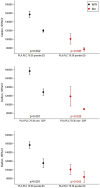Assessment of different manufacturing techniques for the production of bioartificial scaffolds as soft organ transplant substitutes
- PMID: 37441194
- PMCID: PMC10333585
- DOI: 10.3389/fbioe.2023.1186351
Assessment of different manufacturing techniques for the production of bioartificial scaffolds as soft organ transplant substitutes
Abstract
Introduction: The problem of organs' shortage for transplantation is widely known: different manufacturing techniques such as Solvent casting, Electrospinning and 3D Printing were considered to produce bioartificial scaffolds for tissue engineering purposes and possible transplantation substitutes. The advantages of manufacturing techniques' combination to develop hybrid scaffolds with increased performing properties was also evaluated. Methods: Scaffolds were produced using poly-L-lactide-co-caprolactone (PLA-PCL) copolymer and characterized for their morphological, biological, and mechanical features. Results: Hybrid scaffolds showed the best properties in terms of viability (>100%) and cell adhesion. Furthermore, their mechanical properties were found to be comparable with the reference values for soft tissues (range 1-10 MPa). Discussion: The created hybrid scaffolds pave the way for the future development of more complex systems capable of supporting, from a morphological, mechanical, and biological standpoint, the physiological needs of the tissues/organs to be transplanted.
Keywords: 3D printing; bioartificial scaffolds; electrospinning; organ transplant; soft tissue regeneration; tissue engineering; transplantology.
Copyright © 2023 Pisani, Mauri, Negrello, Mauramati, Alaimo, Auricchio, Benazzo, Dorati, Genta, Conti, Ferretti, De Silvestri, Pietrabissa and Marconi.
Conflict of interest statement
The authors declare that the research was conducted in the absence of any commercial or financial relationships that could be construed as a potential conflict of interest.
Figures








References
-
- Abu-Faraj Z. O. (2012). Handbook of research on biomedical engineering education and advanced bioengineering learning: Interdisciplinary concepts: Interdisciplinary concepts. Med. Inf. Sci. Reference. 10.4018/978-1-4666-0122-2 - DOI
LinkOut - more resources
Full Text Sources

